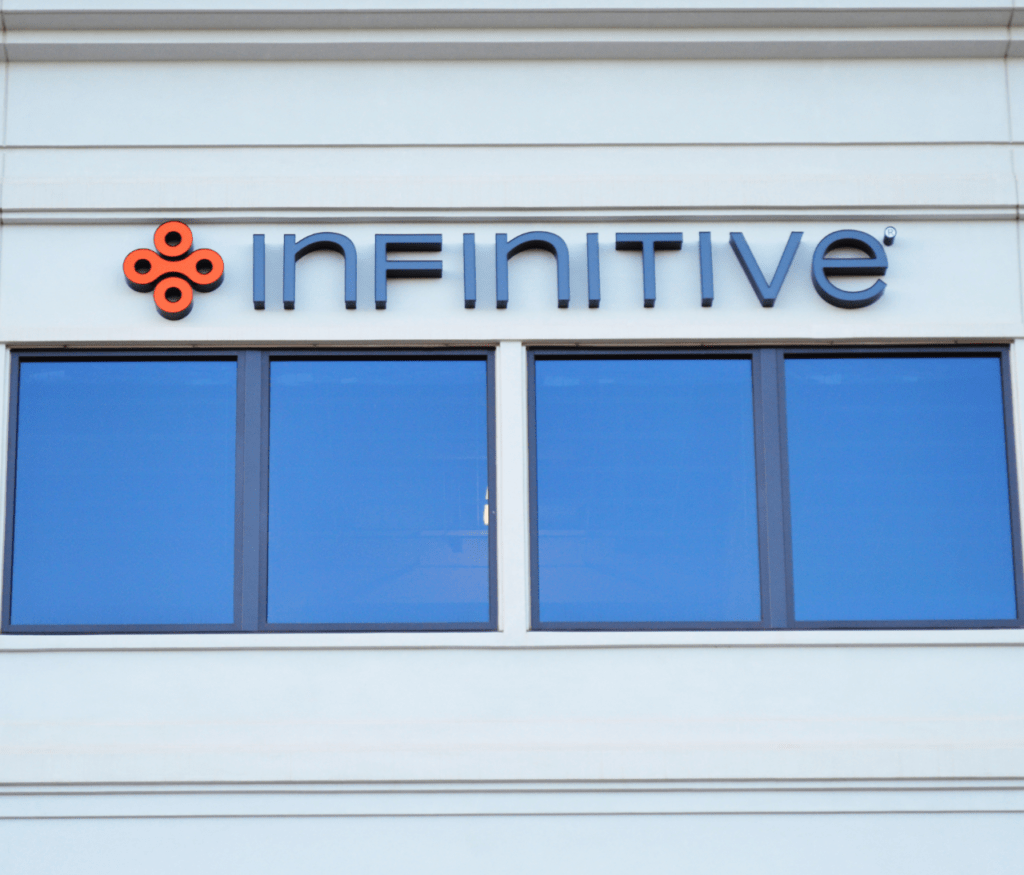Tech Resilience
From strategy development to implementation and value realization, we work with you every step of the way to ensure that your organization has the capacity to withstand any technical disruptions that may arise.
What is Technical Resilience?
Technical resilience refers to the ability of an organization’s technology infrastructure and systems to withstand disruptions, adapt to changing circumstances, and recover quickly from incidents without significant impact on business operations.
In today’s digitally dependent world, technical resilience is no longer a “nice to have,” but a critical business imperative for the following reasons:
- Cloud Computing and Hybrid IT Environments: The widespread adoption of cloud services and the shift towards hybrid IT environments complicate resilience strategies. While cloud computing offers scalability and flexibility, it also introduces dependencies on third-party service providers, requiring robust service level agreements (SLAs) and continuity planning.
- Cybersecurity Threats: Increasingly sophisticated cybersecurity threats, including ransomware, phishing, and state-sponsored attacks, directly impact tech resilience. Organizations must integrate cybersecurity measures with their resilience planning to protect against and quickly recover from such threats.
- Digital Transformation: As businesses undergo digital transformation, their reliance on technology increases. This shift demands that resilience measures are embedded in the design of new digital services and platforms to ensure they can withstand disruptions without significant business impact.
- Regulatory and Compliance Pressures: Regulatory requirements for data protection, privacy, and business continuity are becoming more stringent globally. Organizations must navigate these requirements to design resilience strategies that comply with legal and industry standards.
- Business Continuity and Risk Management: Tech resiliency is a cornerstone of effective business continuity and risk management strategies. By investing in resilient technology infrastructure, organizations can minimize the impact of disruptions, recover quickly from incidents, and maintain operations in challenging circumstances.
- Customer Expectations and Experience: In today’s world, customers expect uninterrupted access to products and services. Any downtime or disruption in technology can result in customer dissatisfaction, erosion of trust, and loss of revenue. Tech resiliency is essential for delivering a seamless and uninterrupted customer experience.
- Globalization and Interconnectedness: In an interconnected world, disruptions in one part of the globe can quickly spread to others. Whether it’s a natural disaster, geopolitical tensions, or a pandemic, organizations need resilient technology systems to adapt to changing circumstances and continue operating effectively, regardless of location

What is the difference between resilience and business continuity?
Business continuity can be understood as the collection of protocols enabling an organization to sustain operations amidst a crisis. On the other hand, resilience refers to the ability to endure and avoid the impact of an unforeseen disruption and continue with your organizations ongoing functionality.
Technology is the foundation of most modern businesses. Disruptions to technology can have severe consequences, even bringing operations to a halt. Resilient technology infrastructure makes BC plans more effective. By minimizing downtime and facilitating faster recovery, it ensures critical functions can continue even during disruptions.
The Cost of Downtime: Real-World Impact
The consequences of technical disruptions can be severe, impacting a business in several ways:
- Financial Loss: Downtime often translates to lost revenue, especially for businesses that rely on e-commerce or online transactions. A 2021 report by Uptime Institute: https://uptimeinstitute.com/ found that the average cost of an unplanned outage for an enterprise is $1 million per hour.
- Reputational Damage: Outages and data breaches can erode customer trust and damage brand reputation. Rebuilding trust can be a long and costly process.
- Productivity Loss: When systems are down, employees are unable to perform their work efficiently, leading to decreased productivity and lost time.
- Compliance Risks: Failing to meet regulatory requirements regarding data security and business continuity can result in hefty fines and penalties.
Ready to Jumpstart Your Technical Resilience Transformation?
Download our Comprehensive Framework for Advancing Organizational Tech Resilience. This will give you the approach you need to have, the activities you need to act on, and the outputs you should receive. Let us know what you’re struggling with, and we can kickstart this journey with you.
Why is Technical Resilience Crucial for Businesses Today?
Mitigating the Impact of Cyber Threats: As the cybersecurity landscape gets more complex, organizations need robust technical resilience to counter sophisticated cyberattacks. This includes implementing strong security controls, regular vulnerability scanning, and having a well-defined incident response plan.
Ensuring Business Continuity in the Cloud: Businesses increasingly rely on cloud-based services and applications. However, dependence on external providers necessitates robust disaster recovery plans and SLAs that outline expectations for uptime and recovery in case of disruptions.
Supporting Digital Transformation: As businesses embrace digital transformation initiatives, they need to ensure that new technologies are built with resilience in mind. This involves incorporating security best practices, adopting a DevOps approach for faster recovery, and designing for scalability to handle increased workloads.
Building Customer Confidence: In today’s digital world, customers expect uninterrupted access to products and services. Technical resilience allows businesses to deliver a seamless customer experience and maintain their trust even in the face of unexpected disruptions.
Adapting to a Changing World: The technology landscape is constantly evolving, and businesses need to be prepared for unforeseen challenges. Technical resilience allows them to adapt to new technologies, evolving threats, and changing regulatory requirements with greater agility
Focus Areas for Building Technical Resilience
Testing and Simulations: Regularly conduct penetration testing, vulnerability assessments, and disaster recovery simulations to identify weaknesses and test the effectiveness of your resilience plan.
Scalability and Flexibility: Design your technology infrastructure to be scalable and adaptable to handle fluctuating workloads and changes in business needs. Consider utilizing cloud-based solutions with built-in redundancy and elasticity.
Incident Response Framework: Establish a clear and well-defined incident response plan that outlines roles, responsibilities, and procedures for responding to security incidents, system failures, and other disruptions.
System Redundancy: Implement redundant components, backup systems, and disaster recovery sites to ensure that critical systems remain operational even if one element fails. Consider geographically dispersed backups to mitigate the risk of regional outages.
Disaster Recovery Planning: Develop comprehensive disaster recovery plans that outline steps for restoring critical systems and services in the event of a major disruption. This includes data recovery, infrastructure restoration, and business continuity procedures.
Operational Resilience Integration:
Align your technical resilience strategy with your overall operational resilience plan to ensure a coordinated and effective response to any disruption.
How Can We Help?
Infinitive’s Capabilities and Solutions
Capabilities
- Risk Assessments and Vulnerability Management
- Infinitive can conduct comprehensive risk assessments to identify and prioritize potential threats to your client’s IT infrastructure, including cyberattacks, hardware failures, and software vulnerabilities.
- We offer vulnerability management services and assessments to continuously scan and identify weaknesses in your client’s systems and applications, providing remediation recommendations.
- Tech Resilience Action Plan
- Assist clients in developing comprehensive resilience plans outlining the steps they will take to recover from disruptions, ensuring minimal downtime and business impact.
- Design and implement solutions tailored to your company, including data backups, cloud-based disaster recovery services, and failover strategies to ensure critical systems and data are quickly restored in case of a disaster.
- Technology Implementation and Integration
- Assist clients in implementing and integrating technical solutions that contribute to technical resilience, such as backup and recovery solutions, network security tools, and cloud-based infrastructure.
- Ensure these solutions are seamlessly integrated with existing systems and processes while optimizing performance and security.
- Ongoing Monitoring and Maintenance:
- Provide ongoing monitoring services to identify potential threats and vulnerabilities in real-time, allowing for proactive mitigation.
- Offer maintenance and support services to ensure your client’s technical infrastructure remains secure, up-to-date, and functioning optimally.
- Training and Awareness Programs:
- Foster a culture of security within your client’s organization, empowering employees to actively contribute to technical resilience efforts.
- Industry-Specific Expertise:
- Develop deep understanding of the specific technical resilience challenges faced by different industries, tailoring your offerings to meet the unique needs of each client.
- Partner with clients to ensure their technical resilience strategy aligns with industry regulations and best practices.
Solutions
- Vulnerability Management Assessment and Roadmap
- Tech Resilience Assessment and Roadmap
- Operational Resilience
- Process Risk Assessment

What else should you be focusing on with your technical resilience plan?
- Operational Resilience: Infinitive helps companies get ahead of expected regulatory mandates to build holistic operational resilience programs that build upon business continuity planning and targeted tech resilience efforts.
- Vulnerability Management: Infinitive enhances vulnerability management by developing tailored programs that align with business objectives, streamline asset inventories, and improve risk assessment and remediation—yielding a robust, compliant security posture.
- Observability: Infinitive supports observability adoption at all stages, enhancing posture by identifying application downtime causes, ensuring architecture visibility for IT/business users, and proactively assessing system health and performance.
- Cloud Risk and Controls: Infinitive has a comprehensive set of solutions focused on cloud risk management, including lifecycle cloud control support, cloud service enablement and establishing policies, standards, and procedures.
Technical Resilience: An Ongoing Journey
Technical resilience is not a one-time fix; it’s an ongoing process that requires continuous monitoring, evaluation, and adaptation. As your organization grows and the threat landscape evolves, your technical resilience strategy needs to adapt accordingly.
As technology changes, so too do the threats and challenges it faces. Building a truly resilient organization requires a proactive approach, constantly adapting your strategy to address emerging technologies, evolving threats, and changing regulatory landscapes.
By continuously evaluating your technical resilience posture and updating your strategy accordingly, you can ensure your organization remains prepared for whatever the future holds.
Ready to Jumpstart Your Technical Resilience Transformation?
Download our Comprehensive Framework for Advancing Organizational Tech Resilience. This will give you the approach you need to have, the activities you need to act on, and the outputs you should receive. Let us know what you’re struggling with, and we can kickstart this journey with you.
How We’ve Done it
Infinitive helps companies and organizations at any stage of their data transformation journey. We partner with you to understand your business and develop data strategies in support of your goals.


Why Work With Infinitive
- Worked with 9/10 of the top Media companies in the world
- We consistently deliver 10X+ ROI on our ad solutions programs—We will do it with you.
- Infinitive helps the largest media organizations: increase revenue, speed up operations, and implement new streaming and addressable solutions that will engage your consumers and grow your business